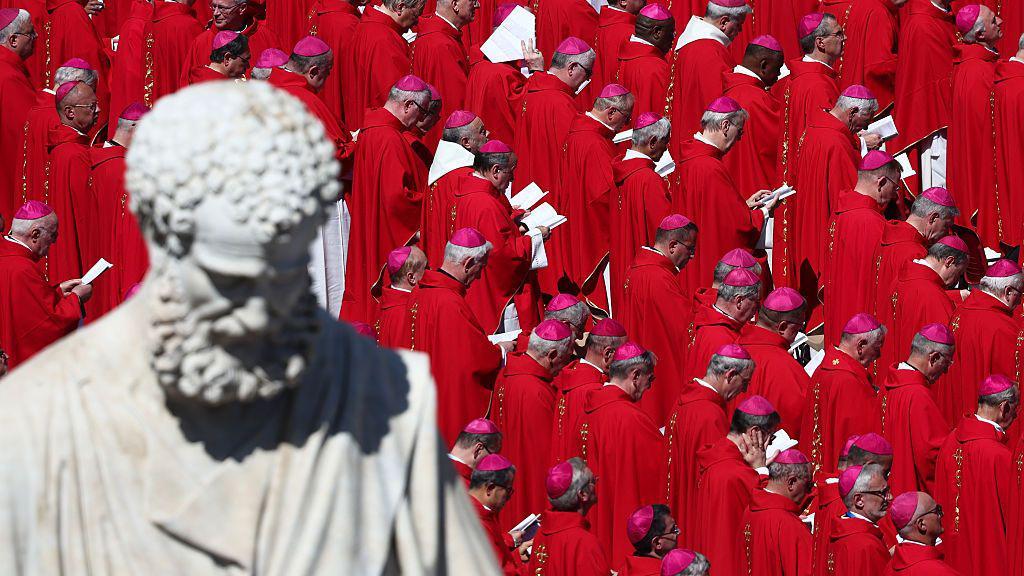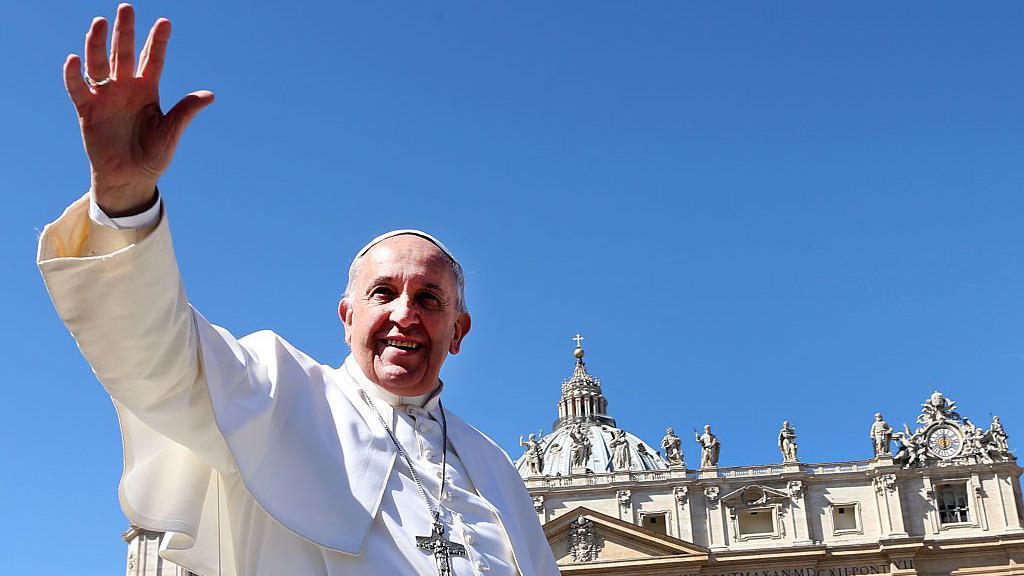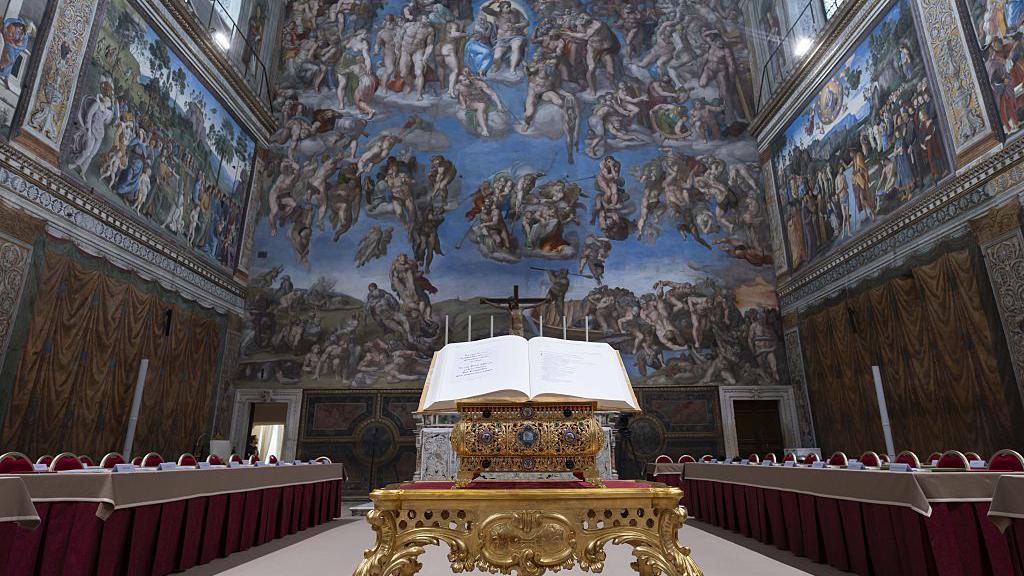On Wednesday night, inside the majestic dome of Michelangelo’s Sistine Chapel, 133 cardinals will cast their votes to choose the Catholic Church’s 267th pontiff.
The morning will kick off at 10:00 (09:00 BST) with a Mass held in St. Peter’s Basilica. This ceremony, set to air on television, will be led by Giovanni Battista Re, the 91-year-old Cardinal Dean who previously officiated at Pope Francis’ funeral.
During the midafternoon, mobile service inside the Vatican’s borders will be suspended to ensure that those participating in the conclave cannot communicate with the external world.
Approximately at 16:15 (15:15 BST), the 133 cardinal electors will assemble in the Pauline Chapel and proceed to the Sistine Chapel.
Throughout this time, they will recite a litany and sing the hymn “Veni Creator,” which serves as an appeal to the Holy Spirit—a divine guide believed to assist the cardinals in selecting the next Pope.
Upon entering the Sistine Chapel, with one hand placed upon a copy of the Gospel, the cardinals will recite an obligatory pledge of confidentiality, ensuring they never disclose information regarding the election process for the new Pope.
Once all the electors have sworn their oaths, a period of reflection will commence. Following this, Master of Papal Liturgical Celebrations Diego Ravelli will declare “extra omnes” (“everyone out”).
Despite not being a cardinal elector, he is among the three clerical personnel permitted to remain within the Sistine Chapel. However, these individuals must exit the area when the voting process reaches the stage of vote-counting.
The moment “extra omnes” is pronounced marks the start of the cardinals’ isolation – and the start of the conclave.
The word, which comes from the Latin for “cum clave”, or “locked with key” is slightly misleading, as the cardinals are no longer locked inside; rather, on Tuesday Vatican officials closed the entrances to the Apostolic Palace – which includes the Sistine Chapel- with lead seals which will remain until the end of the proceedings. Swiss guards will also flank all the entrances to the chapel.

Diego Ravelli will be responsible for distributing the ballots, and shortly thereafter, the cardinals will move forward with the initial voting process.
Although there is nothing prohibiting the Pope from being elected on the initial vote, this hasn’t occurred for many centuries. Nonetheless, that first ballot holds significant importance, according to Austen Ivereigh, a Catholic author and analyst.
“Cardinals receiving over 20 votes will be considered. During the initial vote, the ballots will likely be widely dispersed; however, the voters understand they must focus their efforts on those with significant support,” according to Ivereigh.
He notes that each subsequent vote will show which cardinals are gaining traction. “It’s akin to a political campaign…but it’s not truly a contest; rather, it’s a collective attempt to reach agreement.”
Should the ballot fail to achieve the required two-thirds majority necessary to select a new pope, the cardinals return to their residence at Casa Santa Marta for supper. During this time apart from the official voting sessions, crucial discussions occur amongst them, leading to preliminary agreements emerging regarding various candidates.
According to Italian media, the menu options consist of light dishes which are usually served to guests of the residence, and includes wine – but no spirits. The waiters and kitchen staff are also sworn to secrecy and cannot leave the grounds for the duration of the conclave.

From Thursday morning, cardinals will be taking breakfast between 06:30 (05:30 BST) and 07:30 (06:30 BST) ahead of mass at 08:15 (07:15 BST). Two votes then take place in the morning, followed by lunch and rest. In his memoirs, Pope Francis said that was when he began to receive signals from the other cardinals that serious consensus was beginning to form around him; he was elected during the first afternoon vote. The last two conclaves have all concluded by the end of the second day.
At present, it’s impossible to determine if this conclave will last for a brief period or extend over a longer duration; however, the cardinals understand that prolonging the process might be seen as an indication of significant divisions among them.
As they discuss, pray and vote, outside the boarded-up windows of the Sistine Chapel thousands of faithful will be looking up to the chimney to the right of St Peter’s Basilica, waiting for the white plume of smoke to signal that the next pope has been elected.
- The divisions lurking behind the scenes at the Vatican before the conclave begin.
- Who might become the next pope? Important contenders in an uncertain selection process.
- Secret Ballot: How the Vatican Maintains Papal Vote Confidentiality


Leave a Reply